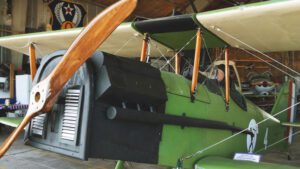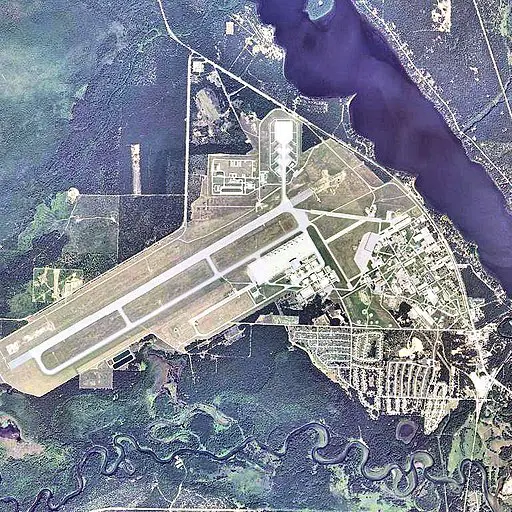If you’ve never visited Oscoda, but the name rings a bell, you might be associating the area with Wurtsmith Air Force Base. The since- decommissioned base was — for many years — the heart of the Oscoda. It remains an important historic site and local legacy.
Wurtsmith was previously known as Camp Skeel, Oscoda Army Air Field and Oscoda Air Force Base. The base operated for seven decades, from 1923 until 1993, and was a pivotal site for the United States Government during the Cold War — one of three Strategic Air Command Centers in Michigan. It was also used in World War II, Vietnam and the Persian Gulf War.
The base was named for Major General Paul B. Wurtsmith, killed in a plane crash in North Carolina in 1946. It was primarily used “as a combat crew and bomber training base,” according to background from the state of Michigan. It was closed following the 1991 Base Realignment and Closure Act.
In the time since, much of the base has undergone remediation and repurposing. A significant portion of the field has become an essential site for Ypsilanti-based Kalitta Air, an all-cargo airline and major regional employer.
The land is also home to Wurtsmith Air Museum, which “works to preserve the history of the men and women that served, so their stories and the history of aviation in northeastern Michigan can be shared with future generations,” according to the organization’s website.
Exhibits and displays at the Wurtsmith Air Museum include submarine models and history, letters and artifacts from the Korean War, uniforms and metals and patches, a history of Kalitta Air, a local pilot’s flight manual from World War I, information about women in the military, and information about the Tuskegee Airmen.
There are numerous aircrafts on display, including a bi-plane from World War I. You can visit the museum at 4071 E. Van Ettan St. in the spring and summer, but taking a leisurely drive around the historic base is possible year-round.

According to a timeline from the museum, residents in Oscoda raised $600 in the 1920s to clear 40 acres of land next to Van Ettan Lake for a training camp and target range called Camp Skeel. In the 1940s, members of the famous Tuskegee Airmen — an all-Black fighter squadron — trained at Oscoda for several weeks and stayed at the previous Welcome Hotel.
The base was renamed Oscoda Army Air Field in 1942. Wurtsmith, born in Detroit, led training flights to the field during World War II. He earned great recognition during the war, and was deeply mourned after his unexpected death.
The base closed for two years before reopening in 1948 as Oscoda Air Force Base. It was renamed again in 1953 to the Paul B. Wurtsmuth Air Force Base.
In the 1960s, the base became part of Strategic Air Command, designed to respond to nuclear attacks from the Soviet Union, according to the museum. The base received numerous awards and recognitions over the following decades, until the end of the Cold War and “mounting national budget problems” preceded the closure announcement in 1991.
There are various buildings available for purchase/lease and plots available for development on the former base, which was considered for a possible space port in 2022.
